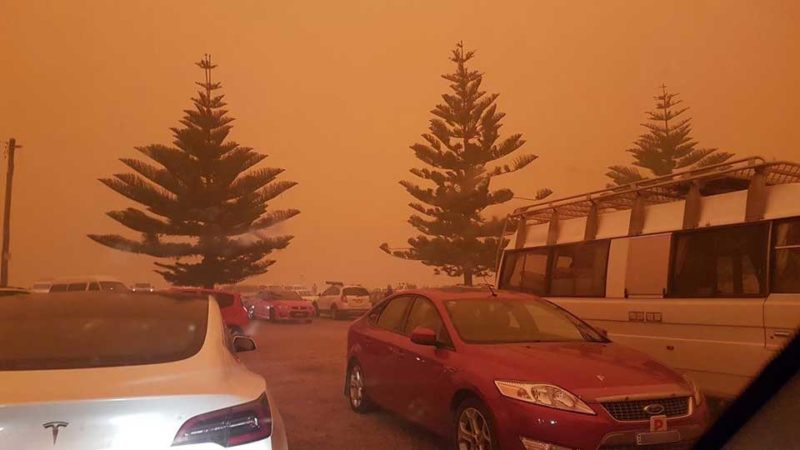Cooler conditions have dampened the devastating bushfires that have ravaged Australia this summer, even though some areas are still under threat. But an uplifting story has emerged of how one family’s experience was made easier thanks to owning an electric vehicle.
Rather than being an impediment in a fire emergency and at risk of running out of driving range, electric vehicle owner Garry Thorpe says his Tesla Model 3 was “brilliant”.
Evacuating residents and holidaymakers told tales of fuel, food and water shortages during the bushfire crisis – but this wasn’t the case for Thorpe and his family of 18, including 10 grandchildren.
“Tesla was brilliant. In a disaster, both power and petrol are rapidly unavailable. When power is restored, fuel is hard to come by,” Thorpe said, recounting the experience in Facebook group “Electric Vehicles for Australia“.
“My experience was that I could get a “full tank” before the crisis arrived, and as soon as the power was back on, could get a “full tank” easier than petrol. The car AC (air conditioning) was brilliant, you can run it for hours with hardly any power drain.”
Holidaying on the South Coast of NSW with his family, Thorpe described how he charged his Standard Range Plus (SR+) Model 3 to 90% off the holiday home’s standard power points when local fire alerts were received.
Forced to retreat to Batehaven beach along with thousands when choking bushfire smoke engulfed their holiday home on the NSW South Coast, the family was able to get some breathing space by using their Tesla Model 3 as a safe haven.
“The beach was a terrible place to be, people retreated to cars. (We) sat in the Tesla for several hours with (aircon) on recycle, hardly any smoke inside. Helped some lost people and shared food/water. Car charge still at 80%,” he says.
The SR+ Model 3 has around 400km real world driving range on a full charge, and with 80% left on the battery Thorpe was also able to do multiple trips in his Tesla to gather supplies for the family that night at the local evacuation centre.
By contrast, his son – and his petrol car – had to make several trips to the fuel station where fuel would invariably run out before he was able to get to the front of the line.
“Day 2 Wednesday: Tesla down to 65% in the morning. Moved back to our house. Power off, eating perishables. Several trips in Tesla. Son tried 3 times to get petrol, but stations ran out before he got to the front. Got up at 4am and found one open, got petrol,” Thorpe wrote.
Of course, electricity can also be hard to come by in a bushfire crisis, but thankfully nearby Bateman’s Bay had power and Thorpe was able to take advantage of the recently opened NRMA fast-charger.
“Day 3: Thursday: … No power at house, but power on at Batemans Bay. Very sketchy comms. Drove in and charged at NRMA 50kW charger, was down to 43%, NRMA limited to 80%. Power back on late afternoon at house. Set scheduled charge to 100% at 7am.”
The bushfire crisis, in which many have lost homes and even loved ones, will leave an indelible mark on those who survived it and though Thorpe’s story is but one of many, the experience of relying on an electric-powered car is noteworthy.
Not only is it another example of how electric vehicles can help rather than “ruin the weekend”, it also illustrates the advantages that powering a car with electricity can have in a crisis, from running air conditioning in a still car in hot conditions without risking overheating the engine to accessing power without the need to wait for fuel.

Bridie Schmidt is associate editor for The Driven, sister site of Renew Economy. She has been writing about electric vehicles since 2018, and has a keen interest in the role that zero-emissions transport has to play in sustainability. She has participated in podcasts such as Download This Show with Marc Fennell and Shirtloads of Science with Karl Kruszelnicki and is co-organiser of the Northern Rivers Electric Vehicle Forum. Bridie also owns a Tesla Model Y and has it available for hire on evee.com.au.

